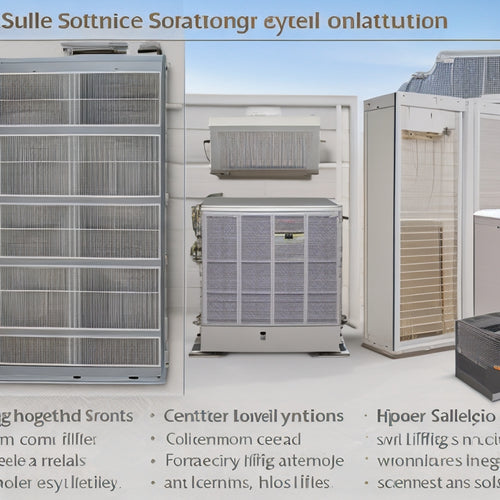
Revolutionizing Urban Deliveries: Electric Three-Wheeler Innovations
Share
Electric three-wheelers are revolutionizing urban deliveries with their unique blend of size, agility, and cost-effectiveness. Arcimoto's Deliverator, for instance, boasts a 20 cubic-foot storage compartment and a 100-mile range on a single charge. As demand for sustainable logistics grows, electric three-wheeler sales are projected to exceed 12 million units globally. With pilot programs in key metropolitan areas yielding success, companies like Arcimoto are spearheading market expansion. With technological advancements and innovative designs driving the future of urban delivery solutions, it becomes increasingly clear that electric three-wheelers will continue to play a pivotal role in shaping the urban logistics landscape.
Key Takeaways
• Electric three-wheelers like Arcimoto's Deliverator offer a sustainable, cost-effective solution for urban delivery fleets with a range of 100 miles on a single charge.
• The global three-wheeler market presents a significant opportunity for electric manufacturers, with projected sales exceeding 12 million units driven by sustainable logistics adoption.
• Electric three-wheelers balance size, agility, and cost-effectiveness, resonating with fleet customers and driving adoption in the U.S. market.
• Integration of IoT and AI technology will optimize routes, reduce congestion, and enhance the efficiency of electric three-wheeler urban delivery solutions.
• Design innovations prioritize cargo capacity, maneuverability, and safety, creating a future-proof delivery solution that addresses sustainability concerns.
Electric Three-Wheeler Deliverator Key Features
The Arcimoto Deliverator, a revolutionary electric three-wheeler, boasts a unique reverse-tricycle configuration, featuring two front wheels and one rear wheel, which provides enhanced stability and maneuverability in congested urban environments.
This design enables the Deliverator to excel in tight urban spaces, making it an ideal solution for last-mile delivery fleets. The vehicle's storage capacity is impressive, with a 20 cubic-foot enclosed compartment, perfect for transporting goods efficiently.
Additionally, the Deliverator's speed capabilities are notable, with a top speed of 75 mph, ensuring timely deliveries. Its range of approximately 100 miles on a single charge further underscores its suitability for urban logistics.
As a cost-effective and environmentally friendly option, the Deliverator is poised to revolutionize urban deliveries.
Market Expansion and Pilot Programs
Amidst the burgeoning demand for eco-friendly and efficient last-mile delivery solutions, Arcimoto is spearheading market expansion and pilot programs in key metropolitan areas.
The pilot program success in cities like New York City, Chicago, and Los Angeles has demonstrated the effectiveness of electric three-wheelers in reducing operating costs for fleet customers.
However, challenges persist, including adjusting to varying urban landscapes and maneuvering through regulatory hurdles.
To mitigate these challenges, Arcimoto is refining its market expansion strategies, focusing on targeted metropolitan areas and forging partnerships with companies like Joco to establish a robust network of fleet customers.
As the pilot programs continue to yield promising results, the impact of electric three-wheelers on the urban delivery landscape is poised to be significant.
Global Three-Wheeler Market Outlook
With over 117 million three-wheelers globally, the majority of which are concentrated in China and India, the global market presents a significant opportunity for electric three-wheeler manufacturers to capitalize on the growing demand for eco-friendly last-mile delivery solutions.
China's dominance is evident, with approximately 100 million three-wheelers, while India also holds a substantial share. The global sales of electric three-wheelers are projected to exceed 12 million units, driven by the increasing adoption of sustainable logistics.
This growth is largely fueled by the need for environmentally friendly and cost-effective solutions in urban deliveries. As the market continues to evolve, electric three-wheeler manufacturers are poised to benefit from the rising demand for eco-friendly last-mile delivery solutions.
Rise of Electric Three-Wheelers
Electric three-wheelers, such as the Deliverator, are emerging as a viable solution for urban delivery fleets, offering a balance of size, agility, and cost-effectiveness that resonates with fleet customers seeking to reduce operating costs and environmental impact.
The rise of electric three-wheelers is fueled by increasing adoption in the U.S. market, driven by companies like Arcimoto and ElectraMeccanica. These innovative vehicles provide a future-proof delivery solution for cities, addressing sustainability concerns and reducing carbon footprint.
As electric three-wheeler adoption grows, fleet customers can expect significant sustainability benefits, including lower emissions and operating costs. This shift towards electric three-wheelers is poised to revolutionize urban deliveries, providing a cleaner, more efficient, and cost-effective solution for urban logistics.
Future of Urban Delivery Solutions
As urban logistics continue to evolve, the future of urban delivery solutions lies in the convergence of technological advancements, sustainable practices, and innovative vehicle designs that prioritize efficiency, cost-effectiveness, and environmental responsibility.
This synergy will drive the adoption of electric three-wheelers, offering a sustainable and efficient solution for urban deliveries.
Key aspects of this future include:
- Integration of IoT and AI to optimize routes and reduce congestion
- Increased adoption of electric vehicles, reducing emissions and operating costs
- Design innovations prioritizing cargo capacity, maneuverability, and safety
- Collaboration between logistics providers, manufacturers, and policymakers to create sustainable urban delivery ecosystems
Frequently Asked Questions
Can Electric Three-Wheelers Be Used for Passenger Transportation Too?
While electric three-wheelers excel in urban deliveries, their potential for passenger transportation remains promising, offering rural accessibility, enhanced urban mobility, commuter comfort, and advanced safety features, contingent upon innovative vehicle design adaptations.
Are There Any Incentives for Businesses to Switch to Electric Three-Wheelers?
Businesses can leverage tax breaks and government subsidies to offset the higher upfront costs of electric three-wheelers, making the shift to eco-friendly fleets more financially viable and attractive to environmentally conscious consumers.
How Do Electric Three-Wheelers Handle Steep Inclines and Hilly Terrain?
'When maneuvering steep inclines, electric three-wheelers like the Deliverator utilize advanced traction control systems and gradient assistance features to maintain stability and control, enabling them to tackle hilly terrain with ease and precision.'
Can Electric Three-Wheelers Be Charged Using Solar Power or Renewable Energy?
"Electric three-wheelers can be charged using solar power or renewable energy through solar integration, leveraging energy storage systems to facilitate off-grid charging, thereby reducing carbon footprint and operating costs for urban delivery fleets."
Are Electric Three-Wheelers Designed to Withstand Harsh Weather Conditions?
Electric three-wheelers are designed with weather resistance and climate adaptability in mind, incorporating materials and sealing systems to protect electrical components from rain, snow, and extreme temperatures, ensuring reliable operation in diverse environmental conditions.
Related Posts
-

Why Solar HVAC Filters Revolutionize Home Energy Efficiency
By adopting solar HVAC filters, you're shifting your home's energy reliance from fossil fuels to clean, renewable sou...
-

What Tax Deductions Apply to Sustainable Building Materials?
You can claim various tax deductions for sustainable building materials, thanks to over 40 federal tax incentives sup...
-

10 Green Waste Solutions Every Homeowner Should Know
You can make a significant impact on the environment by implementing green waste solutions at home. Consider composti...


